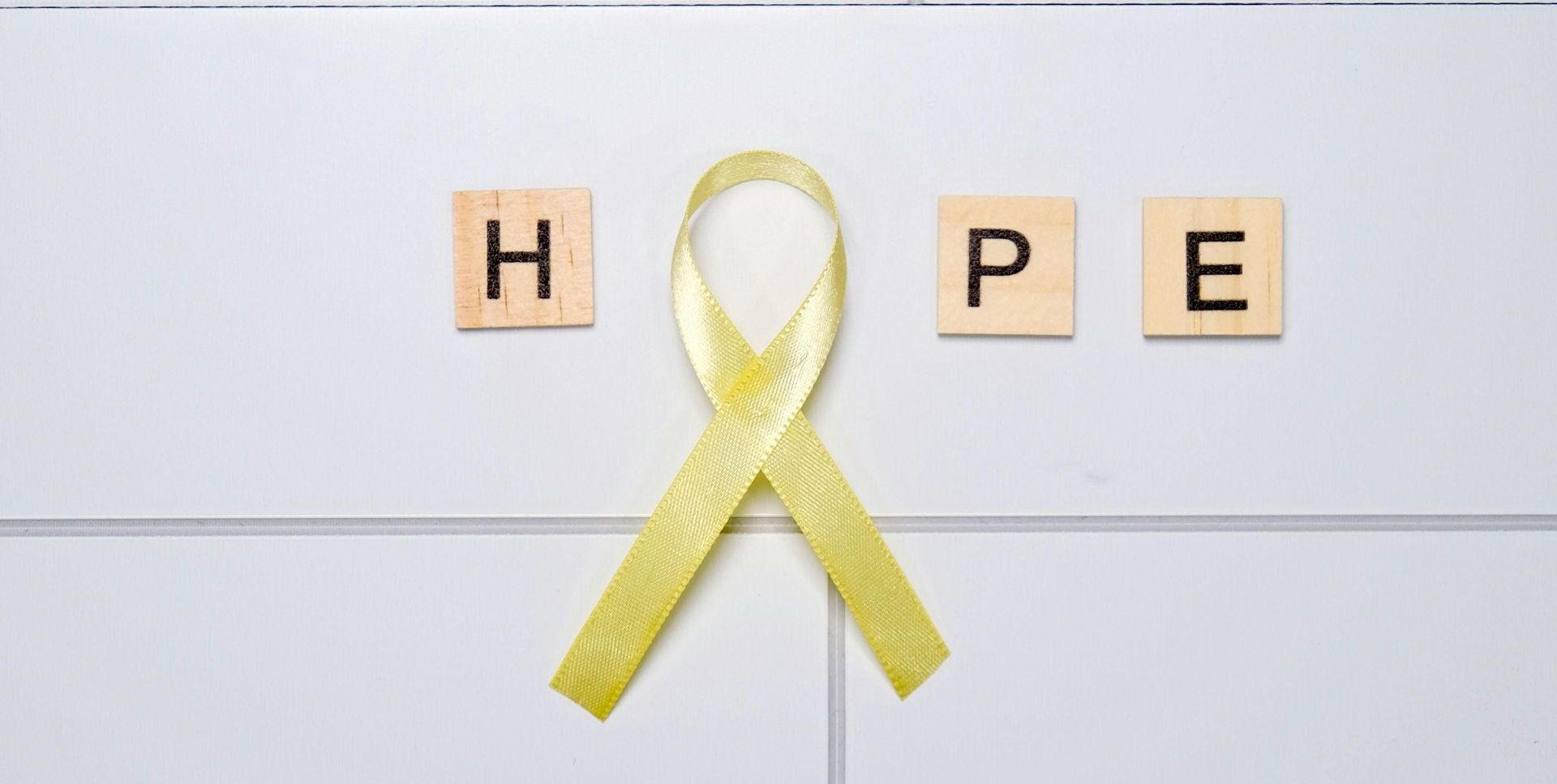Suicide Prevention Month: What Every Loved One Should Know
Suicide Prevention Month:
What Every Loved One Should Know
Trigger Warning: This article discusses suicide, suicidal thoughts, and depression. If you are in immediate crisis, please call 988 right away.
Help is available, and you do not have to go through this alone.

September is Suicide Prevention Month, a time that often carries a mix of urgency and silence.
- Urgency, because suicide continues to affect far too many lives.
- Silence, because it’s still something people feel afraid to talk about. Sometimes even with those closest to them.
But the truth is, talking about suicide doesn’t make it more likely. Talking about suicide makes it safer. And if you are supporting someone you love, knowing how to recognize the signs and respond could be life-saving.
Why Suicidality Can Happen
Suicidality doesn’t appear out of nowhere. It often grows out of deep and prolonged suffering.
One of the most common pathways is depression, a medical condition that alters the way someone thinks, feels, and functions day to day. Depression can bring crushing hopelessness, feelings of worthlessness, and the belief that nothing will ever improve.
A key symptom is anhedonia, which is the inability to feel joy or interest in things that once mattered. When every source of comfort or pleasure feels flat, life itself can begin to feel meaningless. In this state, suicidal thoughts can emerge, not because someone truly wants to die, but because they can no longer imagine a future where the pain lifts.
Passive and Active Suicidality
Suicidal thoughts exist on a spectrum, and it helps to understand the difference.
- Passive suicidality might sound like, “I wish I could disappear” or “I don’t want to wake up tomorrow.” The person may not have a plan, but the longing to no longer exist is very real and very serious.
- Active suicidality means those thoughts have moved into planning, intent, and possible action.
Both deserve immediate care. It’s a misconception that only active suicidal thoughts are dangerous; passive suicidality is often a warning sign that someone’s pain is becoming unbearable.
Recognizing the Signs of Suicidality
One of the hardest parts about suicide is that it can be invisible until it feels too late. Not everyone who is struggling will say, “I want to die.”
Often, the signs are subtle and show up in changes to how a person speaks, behaves, or connects with others. It’s important to remember that one sign alone does not necessarily mean someone is suicidal but when several appear together, it may be a signal that they’re in serious distress.
Things to look out for include:
- Changes in mood or language. Expressions of hopelessness, feeling like a burden, or saying life has no purpose.
- Withdrawal. Pulling away from friends, family, or activities they once enjoyed.
- Behavioural Changes. Sleeping too much or too little, changes in appetite, increased use of alcohol/drugs
- Giving things away. Offering prized possessions to others or making unusual "final" arrangements.
- A shift in calmness. Sometimes, after a period of deep struggle, a sudden sense of peace can mean they've made a decision to attempt suicide.
Alongside warning signs, there are risk factors—life situations or conditions that increase vulnerability. These don’t guarantee that someone will become suicidal, but they do call for extra care and attention, especially if warning signs also appear.
Some common risk factors include:
- A history of depression or other mental health conditions
- Previous suicide attempts or a family history of suicide
- Major life changes or losses (e.g. end of a relationship, divorce, financial crises, or job loss)
- Periods of transition (e.g. retirement, moving away from support network)
- Chronic illness or pain
- Exposure to suicide, either through media coverage or within their community
- Lack of support systems, isolation or strained relationships
- Substance use
Being aware of both signs and risk factors gives loved ones a clearer picture of when to step in, check in, and offer support.

What You Can Do as a Loved One
If you’ve ever sat across from someone you care about, sensing their pain but not knowing what to say, you are not alone.
It’s common to feel afraid of “saying the wrong thing.” But silence is often more harmful than asking directly.
In fact, research shows that asking, “Are you thinking about suicide?” does not put the idea in someone’s head. More often, it offers relief that someone finally sees their suffering clearly enough to name it.
When supporting someone, the most important gift you can give is presence. You don’t need the perfect words. You don’t need to have all the answers. What matters is showing up without judgment, listening without rushing to fix, and staying steady when their emotions feel overwhelming.
Encourage them to reach out for professional help, and if they’re in immediate danger, do not leave them alone. Safety always comes first.
Preventing Suicide Attempts
Prevention is not about one dramatic intervention. It’s about many small steps that, together, create a safer environment. That might mean helping a loved one remove or secure dangerous items, checking in regularly, even with just a short text, and reminding them they are not a burden.
It might mean learning about crisis hotlines so you can share the number when needed. And it always means taking their words seriously, even if they seem uncertain or subtle.
Here are a few ways you can actively support a loved one:
- Stay Connected. Regular phone calls, texts, or visits remind them they are not alone
- Encourage Professional Help. Offer to research therapists, drive them to an appointment, or sit with them while they make a call.
- Check In About Safety. Ask if they have access to harmful items and, if possible, help limit access.
- Normalize The Conversation. Speak openly about mental health and suicide so it feels less isolating and/or shameful.
- Be Consistent. Even when they push away, gentle and ongoing presence communicates that they matter.
- Know The Resources. Keep crisis numbers handy so you're ready in a moment of need.
These actions, though small on their own, create a net of care that can reduce risk and offer hope during a critical time.
Caring for Yourself, Too
Supporting someone through suicidal thoughts can be emotionally heavy. It’s easy to put your own needs aside, but your well-being matters too.
Talking with a therapist yourself, joining a support group, or even confiding in a trusted friend can help you stay grounded.
Remember: you cannot pour from an empty cup, and your strength is vital not only for you but for the person you are supporting.
A Final Word
Suicide is not about weakness, and it is not about selfishness. It is about unbearable pain that someone can no longer see a way through.
By learning the signs, understanding the spectrum of suicidality, and showing up with compassion, you can be part of the lifeline that helps them find hope again.
If you or someone you love is in crisis, please reach out:
- Call or text 988 for the Suicide & Crisis Lifeline
- Find international hotlines at findahelpline.com
- If in immediate danger, call 911
Talking about suicide doesn’t push people closer to it but rather it pulls them back from the edge.
Your willingness to speak, listen, and act could change everything.



